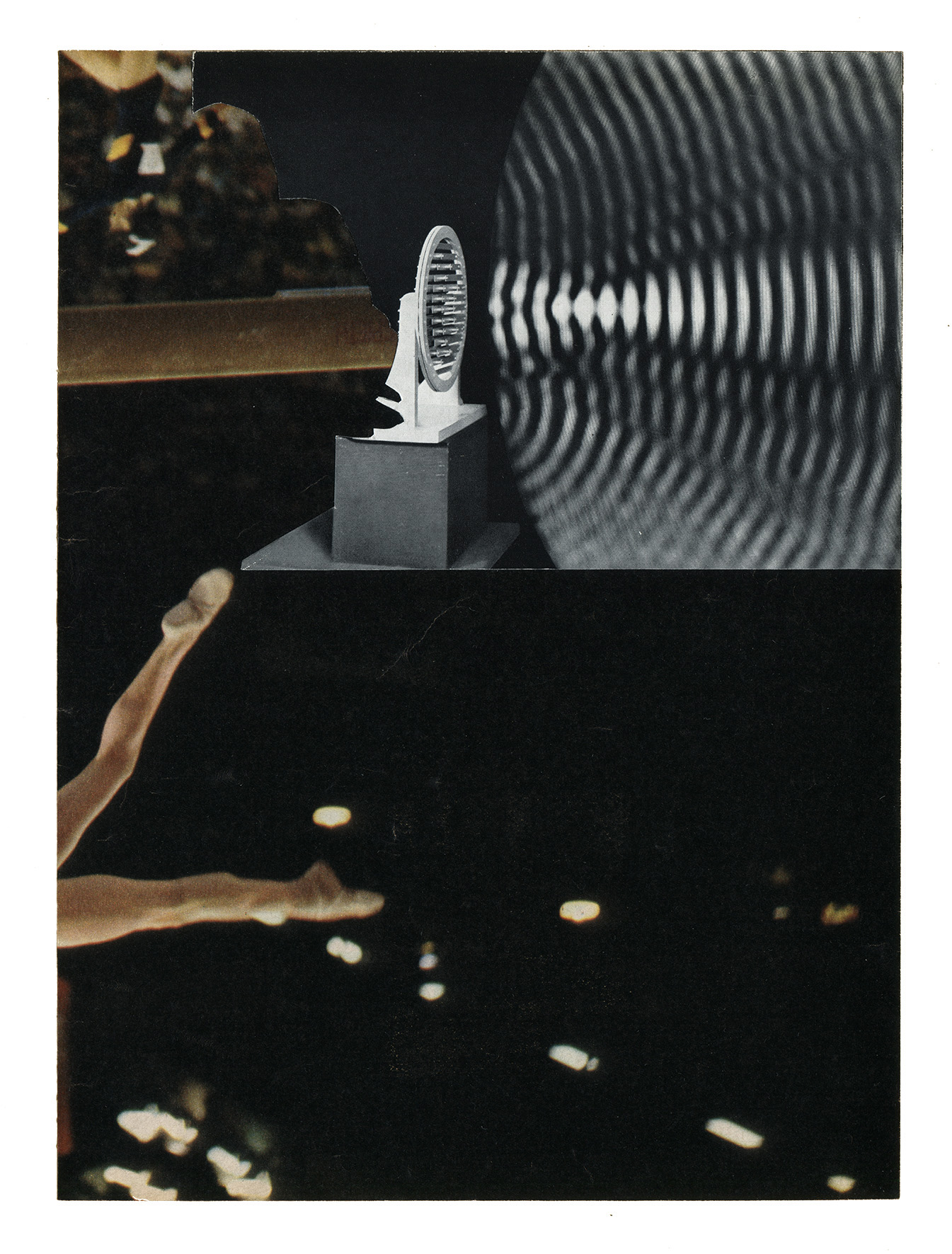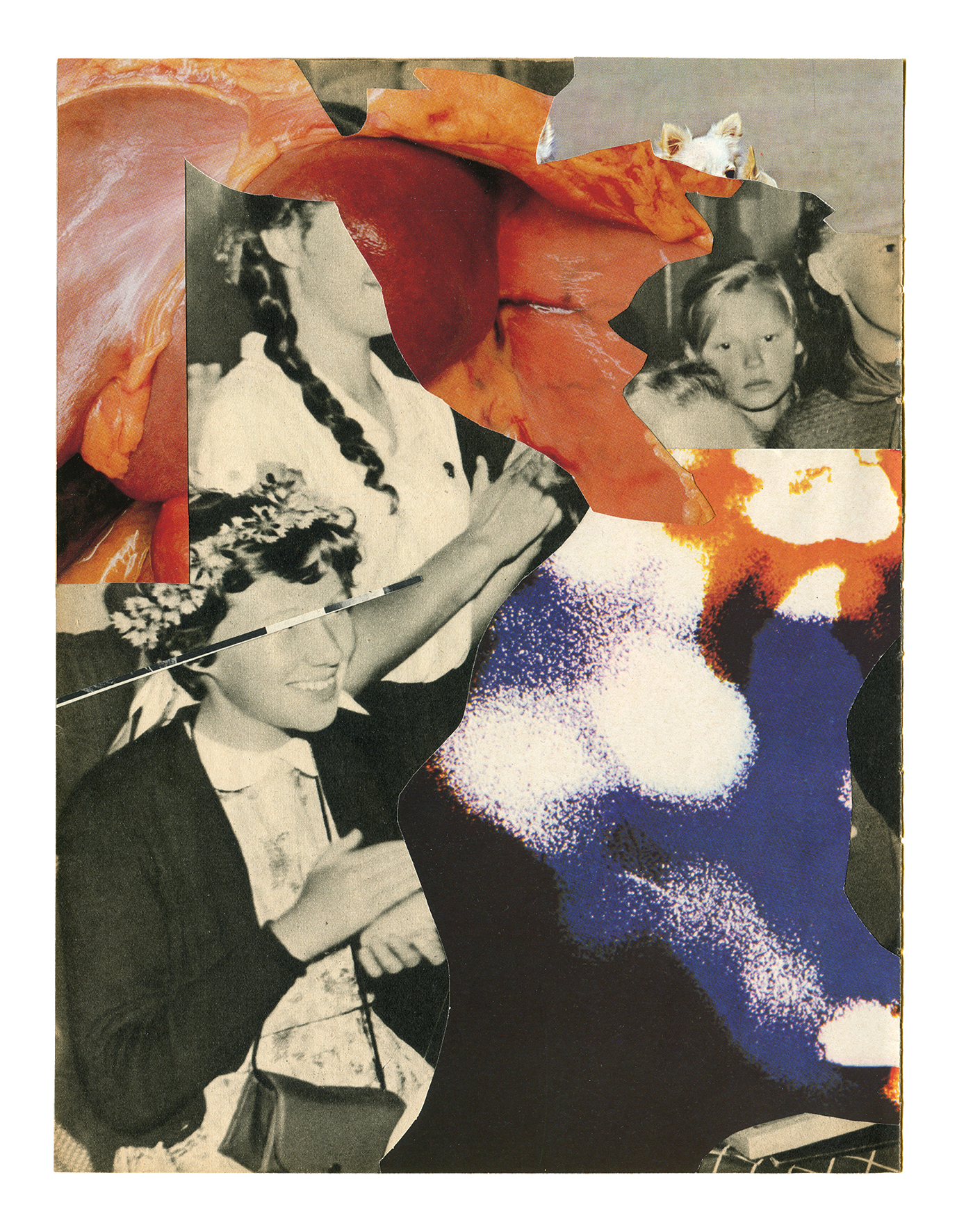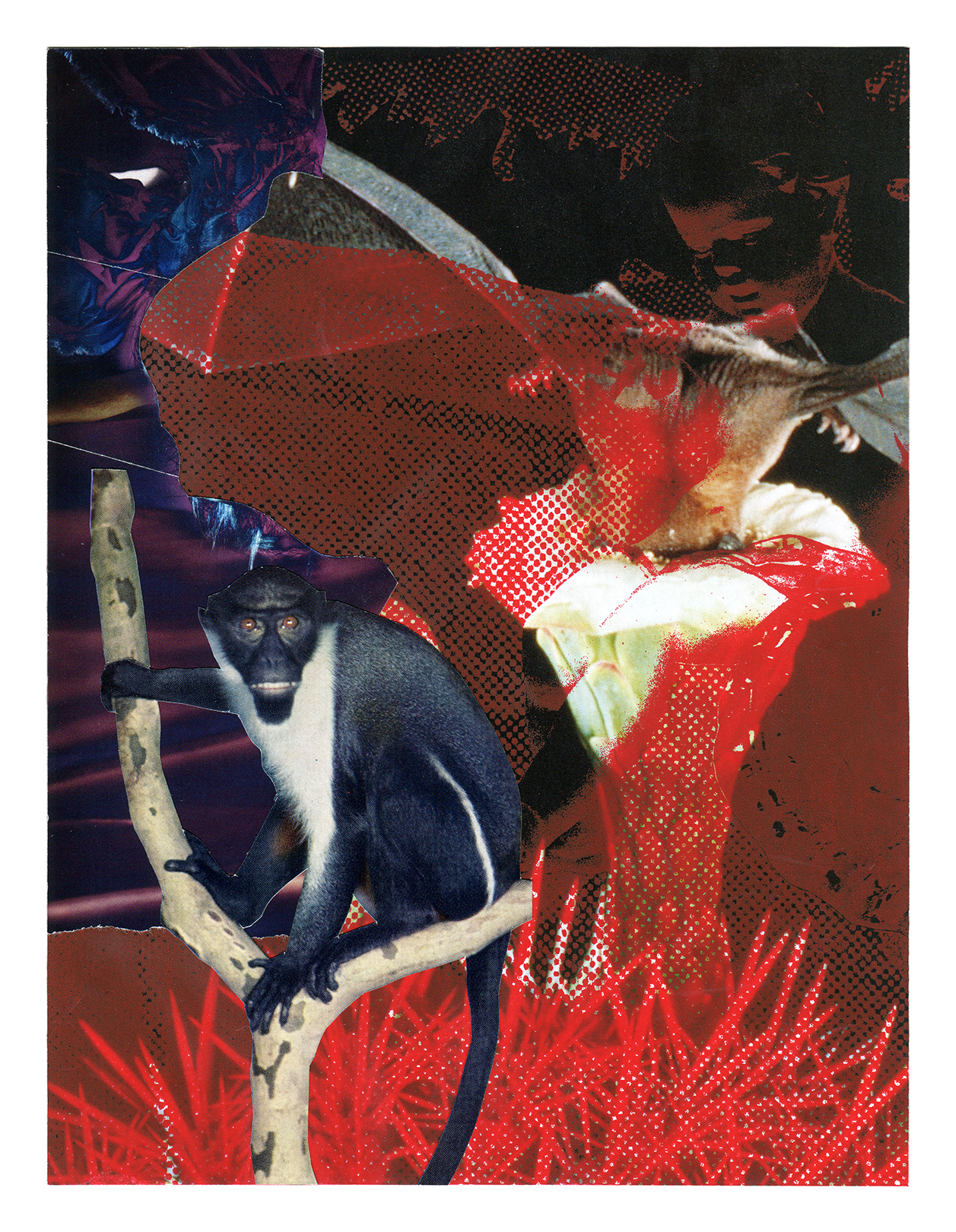Collages
A selection of collages produced between 2006 and 2024
(The complete WVZ - Werkverzeichnis / Catalogue raisonné can be seen here)





















The workspace of Barbara Breitenfellner is host to an elaborate rigging of books, boxes and trays that more closely resembles a chemistry lab than a cutting table. A long worktable lines one blue wall of her home-studio, whereon clippings brew in piles, paper churns in various stages of doing and undoing, and cans of spray glue await their day. Wallabies and bombshells rotate in and out of circulation, off the shelf, out of the book, off the page, into the hash, out of the hash, then either onto the page, into the frame and back onto the wall, or into a box for another chance at reincarnation. Observing the marked precision in Breitenfellner's collage work–a microscopic view of strand of hair perfectly parallels the leg of the owl in flight it overlays–it is surprising to learn that thematic calculation ends after her selection of source materials, that firm intent it is absent during the assembly of her collages: My collages spring from the threatening, erotic and illogical universe of dreams, there images extinguish themselves, leaving uncertain traces in our memory. Through the overprinting, cutting-out, overturning and adjoining of images I play, seemingly uncontrolled, with the circumstances of the unconscious. The particularly compelling compositions that develop through this process simply cluster about me, almost taking me by surprise. It's as if someone else had made them. Those are my best works. (Elizabeth Pusack)
Barbara Breitenfellner’s collages refute the assumption of a direct, rational connection between reality and art, or between life and narrative. As the artist explains in one of her interviews, she does not intend to recreate the world, and thus contribute to an art that imitates reality. Rather, she wants to question the flow of images disseminated by newspapers, magazines and audiovisual media, which has become a characteristic component of daily life. To this effect, she ‘reuses existing images’, retraces their influence on our unconscious and shows how they ultimately constitute a different – unstable and porous – reality. In this questioning of reality and life, the techniques of collage and installation, by enabling surprising associations of ideas, help her create an uncanny, dreamlike atmosphere and allow us to imagine a reality that is anything but innocent.
Breitenfellner’s collages critique the ubiquity of photographic images and the certainties attached to our perception of, for instance, women and animals, as well as our relationship to them and to art. Her collages ar the result of a long-term experimentation process: delicately held together by paper clips, they hang on the wall of her studio for severa days, as she changes or adapts their various constituents until the wor has found its inner logic. Breitenfellner’s interest focuses on the momentum developed by a collage in the making and the relationship between the different parts of the image. Other techniques used by the artist include cutting out circles and holes as well as overlaying silkscreen-printed grids or scientific curves onto the collage. These are designed to unite the different parts of the work while preventing the immediate perception of the image as a whole by producing distance and depth. They undermine the affirmative character of the images and replace them with a short-lived, fleeting reality that embraces contradiction and incoherence. (Daglind Sonolet)
Breitenfellner’s collages critique the ubiquity of photographic images and the certainties attached to our perception of, for instance, women and animals, as well as our relationship to them and to art. Her collages ar the result of a long-term experimentation process: delicately held together by paper clips, they hang on the wall of her studio for severa days, as she changes or adapts their various constituents until the wor has found its inner logic. Breitenfellner’s interest focuses on the momentum developed by a collage in the making and the relationship between the different parts of the image. Other techniques used by the artist include cutting out circles and holes as well as overlaying silkscreen-printed grids or scientific curves onto the collage. These are designed to unite the different parts of the work while preventing the immediate perception of the image as a whole by producing distance and depth. They undermine the affirmative character of the images and replace them with a short-lived, fleeting reality that embraces contradiction and incoherence. (Daglind Sonolet)